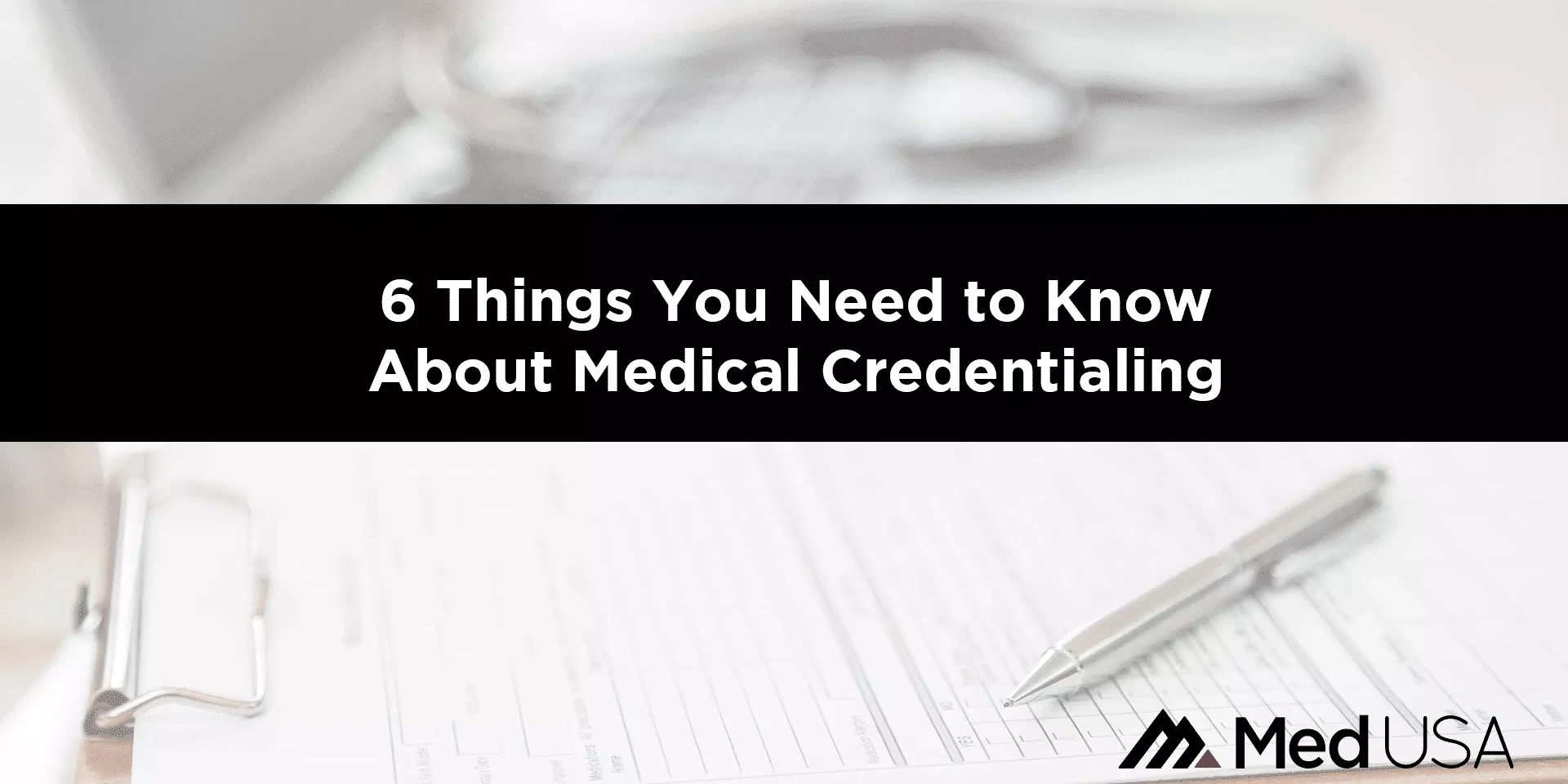
6 Things You Need to Know About Medical Credentialing
Credentialing is key to creating a successful healthcare practice. Credentialing, in a nutshell, is the process of verifying that a healthcare provider is qualified to provide medical services. This process includes checking that providers have the required education, training, residency, licenses, and specialty certificates to do their job. Credentialing is crucial to creating a successful practice because it protects patients, prevents revenue loss, and increases patient confidence by ensuring that all healthcare workers are held to the same standard. Whether you have an established practice or are looking to set up a new practice, here are the six things you need to know about credentialing to help your practice thrive and get paid for the services you provide.
1. Credentialing Increases Patient Confidence
Medical credentialing provides quality assurance to the medical industry. Because of credentialing, hospitals and clinics can be confident that the staff they hire will provide quality care according to the standards required of them. Practitioners benefit from medical credentialing because once they are enrolled with multiple insurance companies, they can expand the number of patients who have access to them. Finally, patients get perhaps the greatest benefit of all–the knowledge that the medical industry is maintaining rigorous standards and ensuring that they receive the highest quality care from their healthcare providers.
Perhaps the most important purpose of medical credentialing is to assure patients that the individuals providing their medical care are qualified and competent to do so. Through credentialing, patients can be assured that there has been an adequate and thorough review of their healthcare provider’s merit and experience. This enables patients to have confidence and trust in their chosen healthcare provider. Additionally, a thorough credentialing process can prevent the admission of unreliable or deceitful providers. Most healthcare workers understand that providing care for patients is a privilege, and this privilege goes hand in hand with being properly credentialed.
2. Timely Credentialing Protects Against Revenue Loss
Credentialing and enrollment provide the starting point for your practice’s revenue cycle. You need to be credentialed to treat patients, and you need to be enrolled with insurance companies to get paid. Delays or lapses in these processes can cause reimbursement to be delayed or even denied, which can have a significant impact on your cash flow.
Credentialing is a foundational element of the revenue cycle management (RCM) process because all reimbursement depends on it. New providers must wait until their credentialing is complete before they can start seeing patients and billing for their services. If currently practicing physicians allow their credentials to lapse, they will not be eligible for reimbursement from insurance companies until their credentials have been verified and approved. You and your staff can prevent claim denials and other harm to your revenue cycle through accurate and timely credentialing. By avoiding mistakes and completing the credentialing and recredentialing processes as quickly as possible, you can achieve revenue integrity and receive optimal reimbursement for the services you provide.
3. Documentation Must Be Accurate and Complete
The most common mistake made during the credentialing process is a lack of attention to detail. Credentialing requires an extensive amount of paperwork that must be filled out accurately and completely. Omitting information or entering data wrong can delay the credentialing process for weeks and can ultimately result in application rejection. Accuracy is key, and getting it right the first time means faster approval.
Most healthcare organizations create credentialing programs that meet the minimum set of credentialing requirements as called for by the National Committee for Quality Assurance (NCQA). In accordance with these requirements, you should collect and organize your paperwork in such a way that in the event of a denial or an audit, you have the necessary records and proof of due diligence.
4. Get Started Early and Follow Up!
Don’t procrastinate getting your credentialing started! The credentialing process usually takes between 90 to 120 days to complete, and you are working on someone else’s timeline once your paperwork is submitted. You can help expedite the process by ensuring that your paperwork is correctly and thoroughly filled out, and by providing all required supporting documentation. You can also contact your verification sources and request that they send all verification responses as quickly as possible.
After your paperwork has been submitted, following up throughout the credentialing process is key to getting your application approved. No one is, or should be, more concerned about your application than you. The only way to know the status of your application is to follow up on a regular basis. Incorporate follow-up into your weekly schedule, and don’t stop until your application is approved and enrollment is secured.


